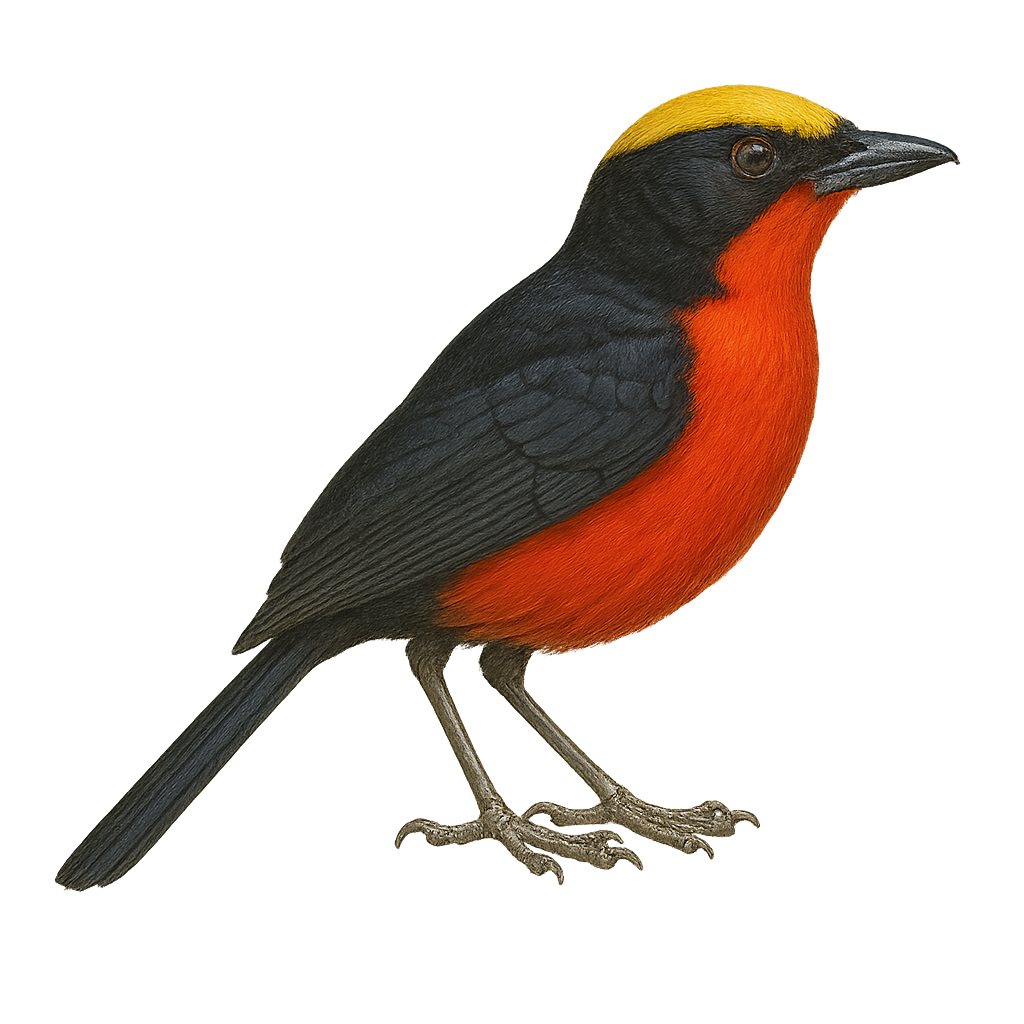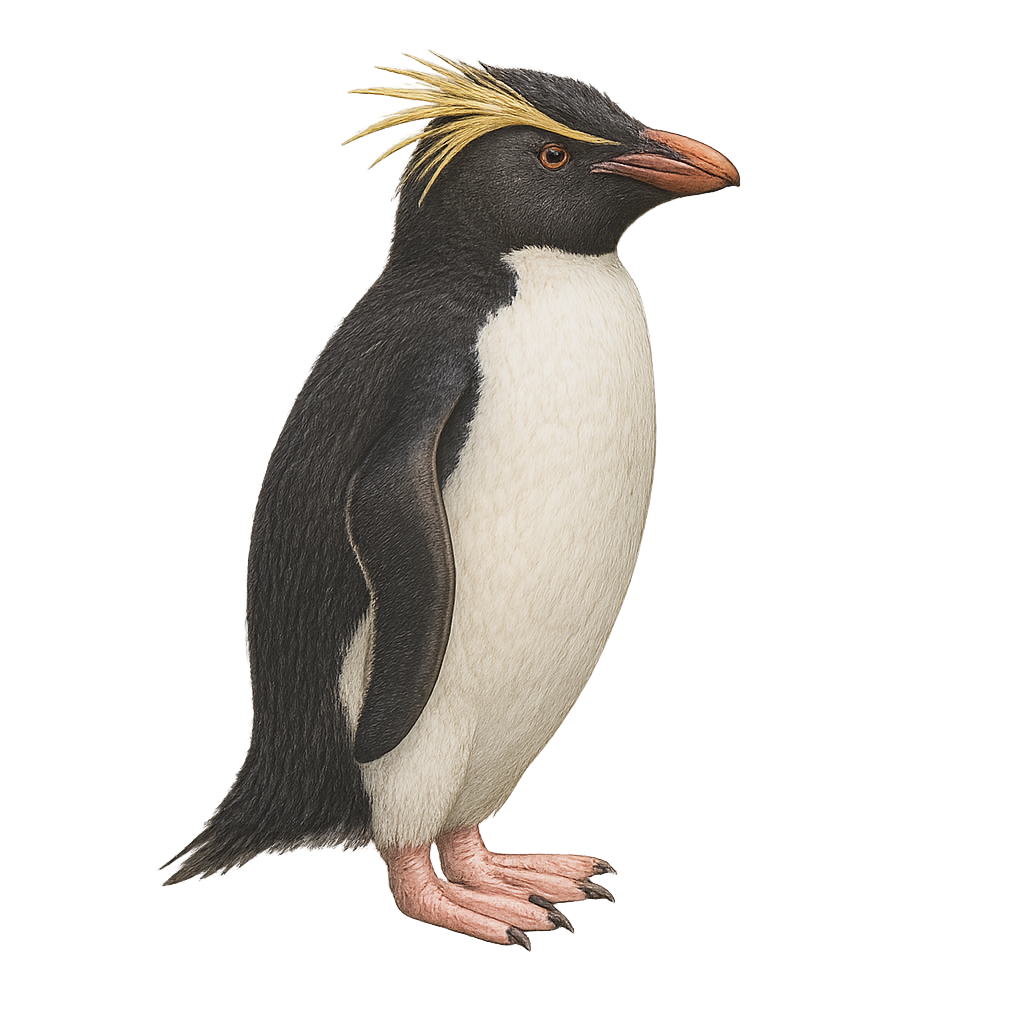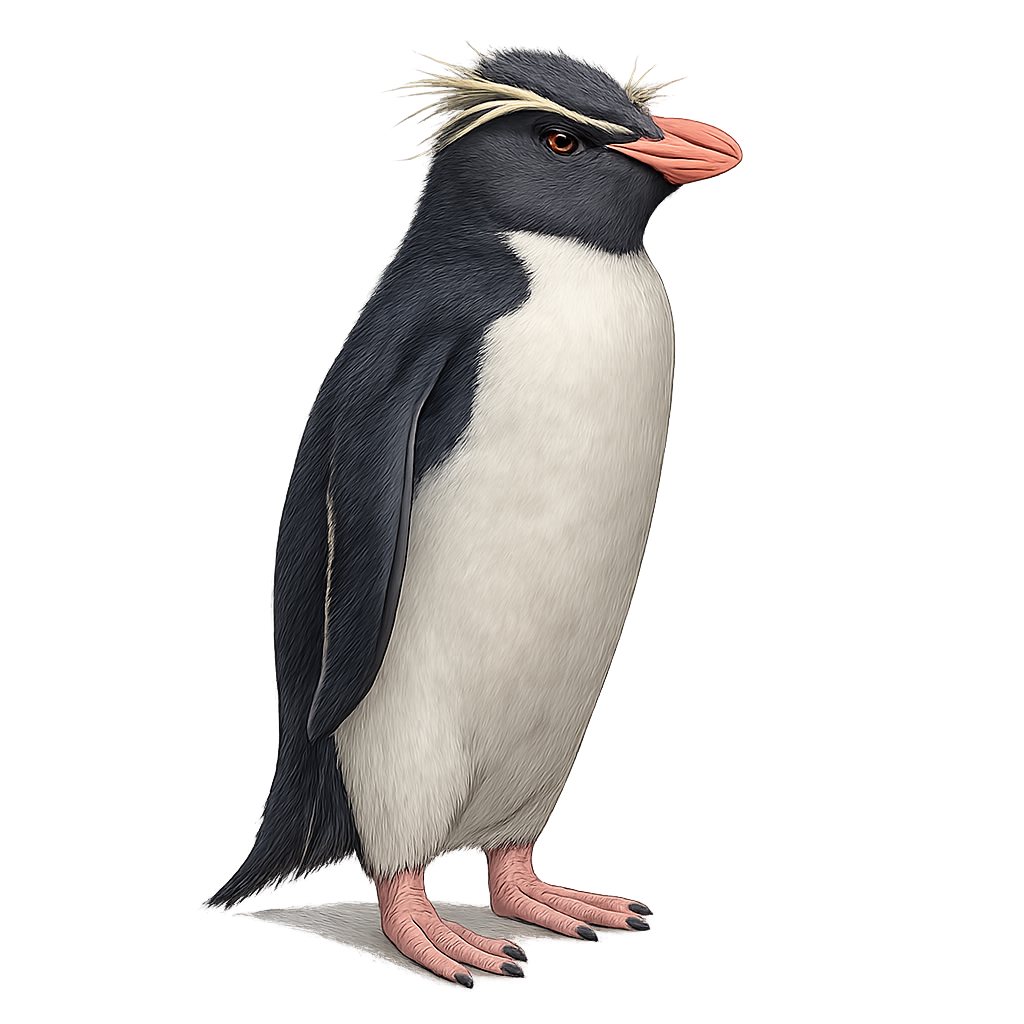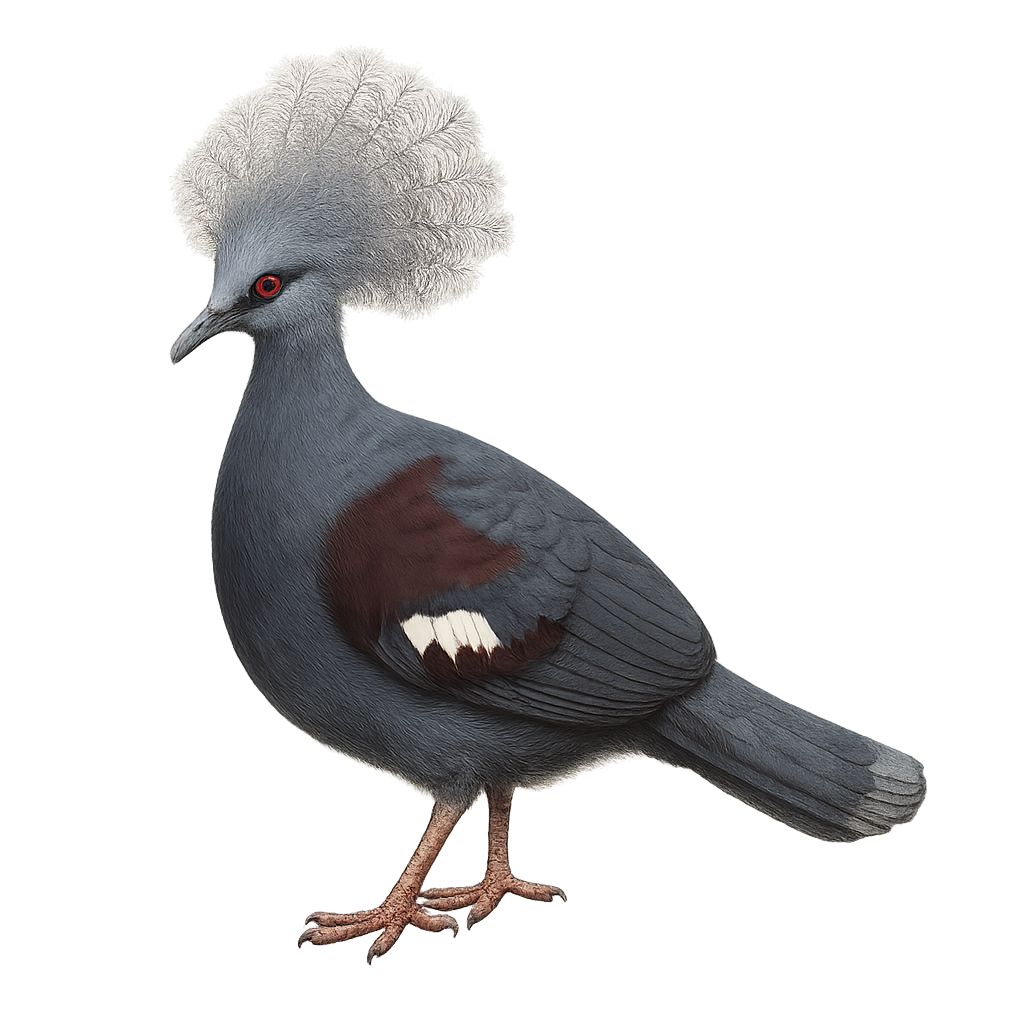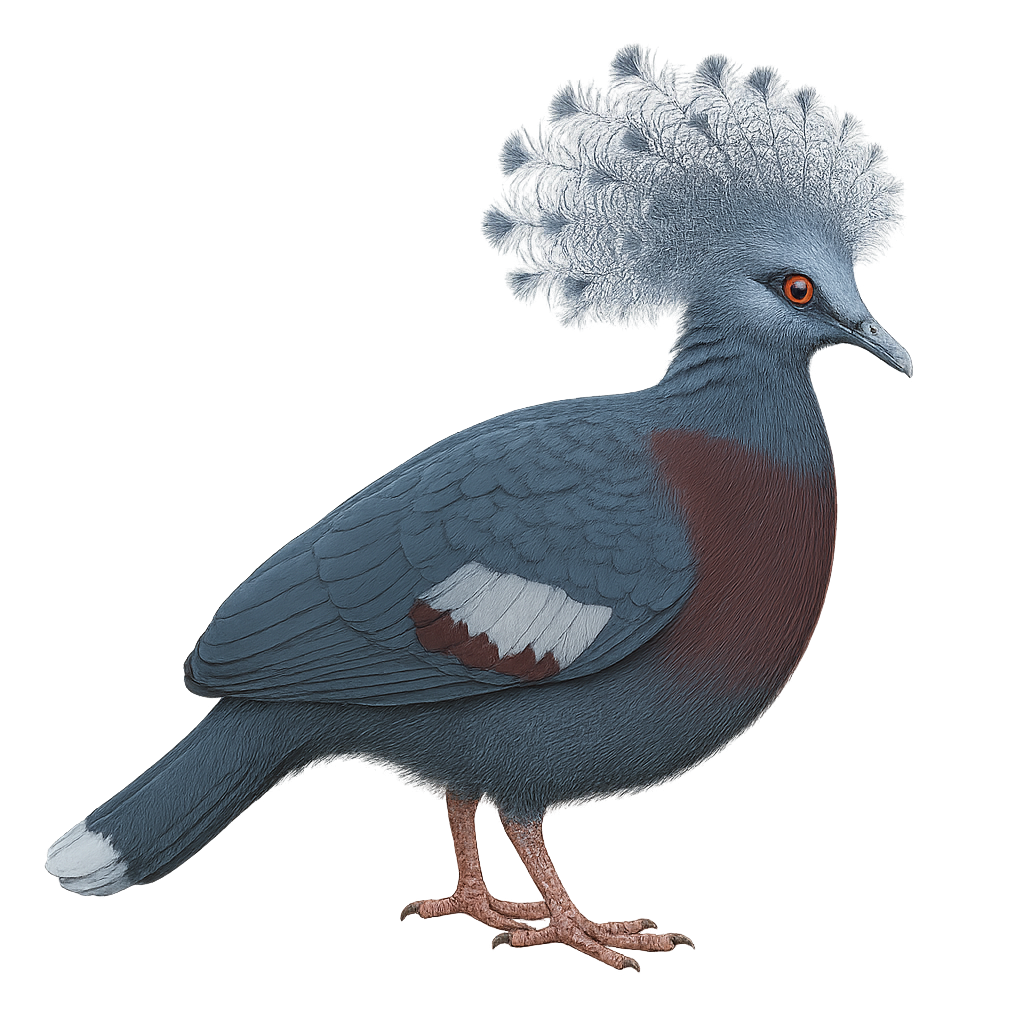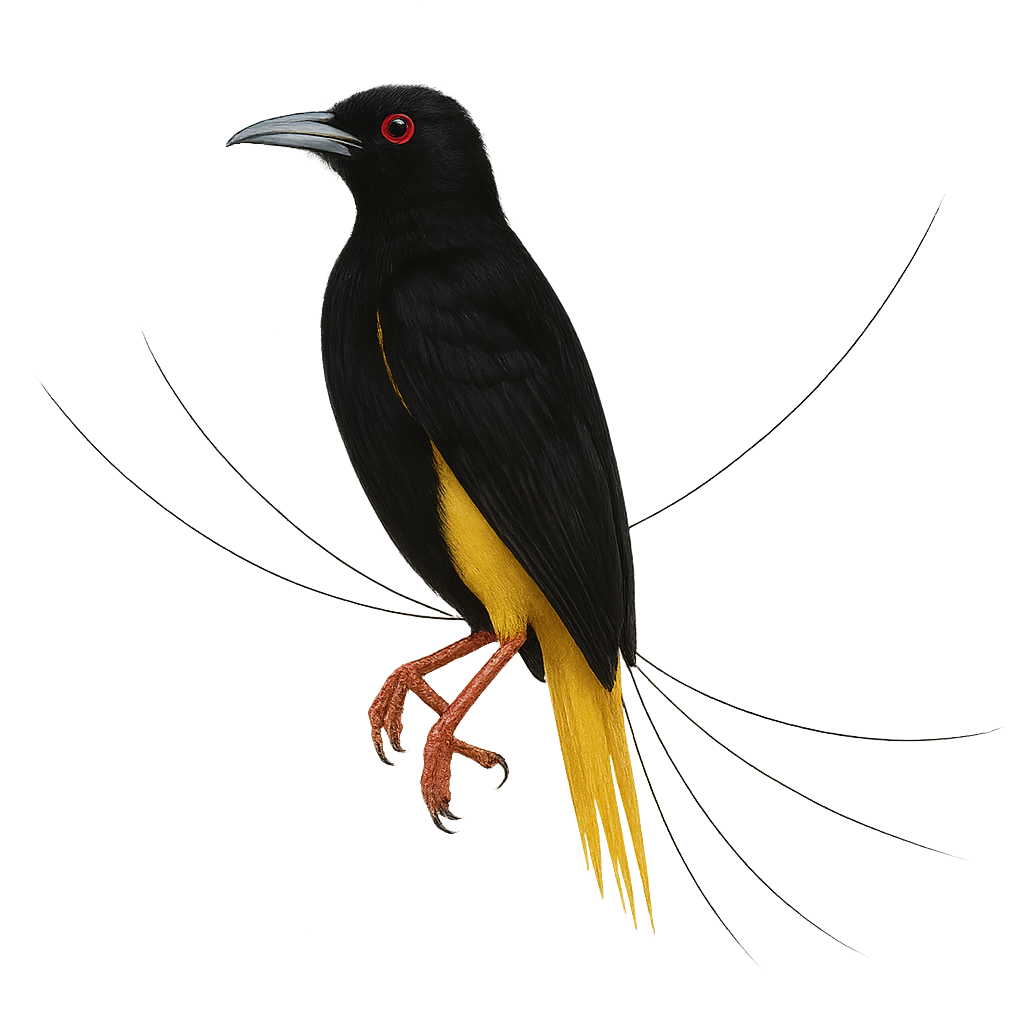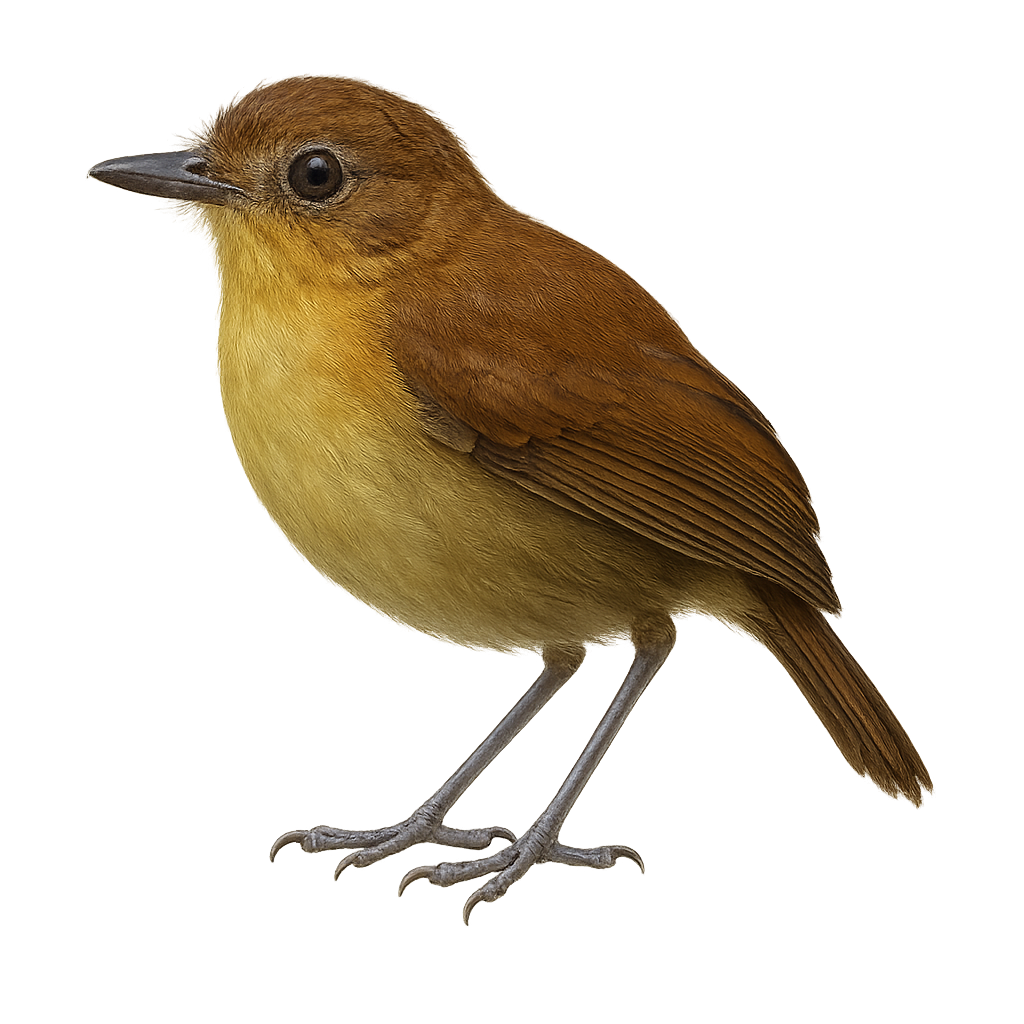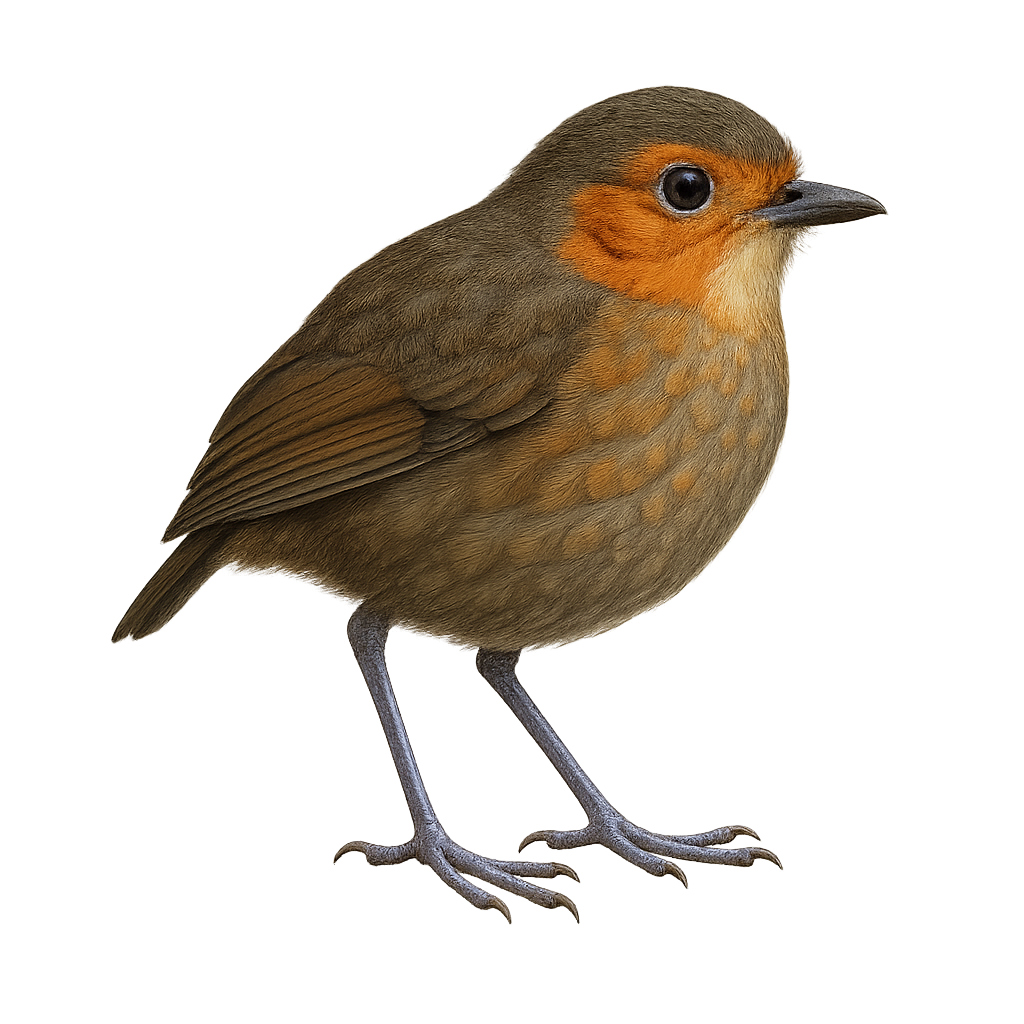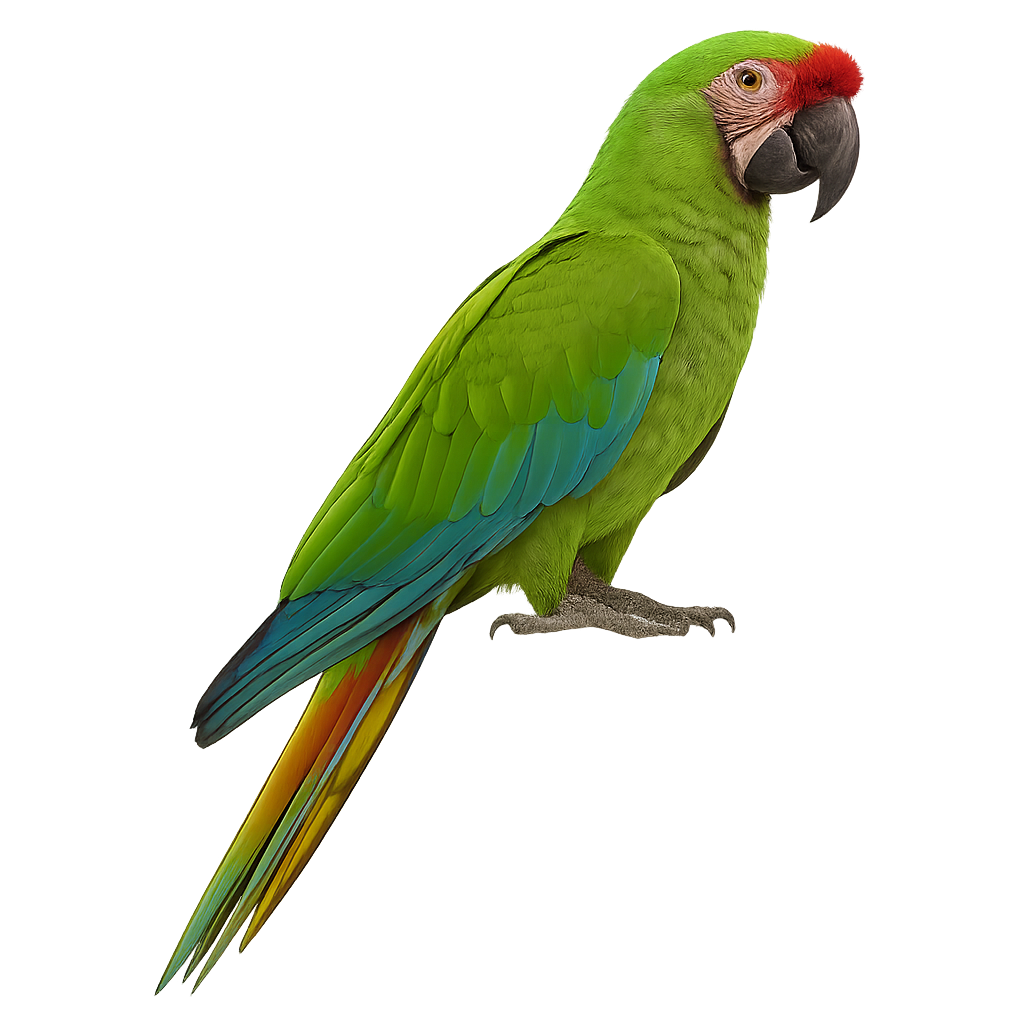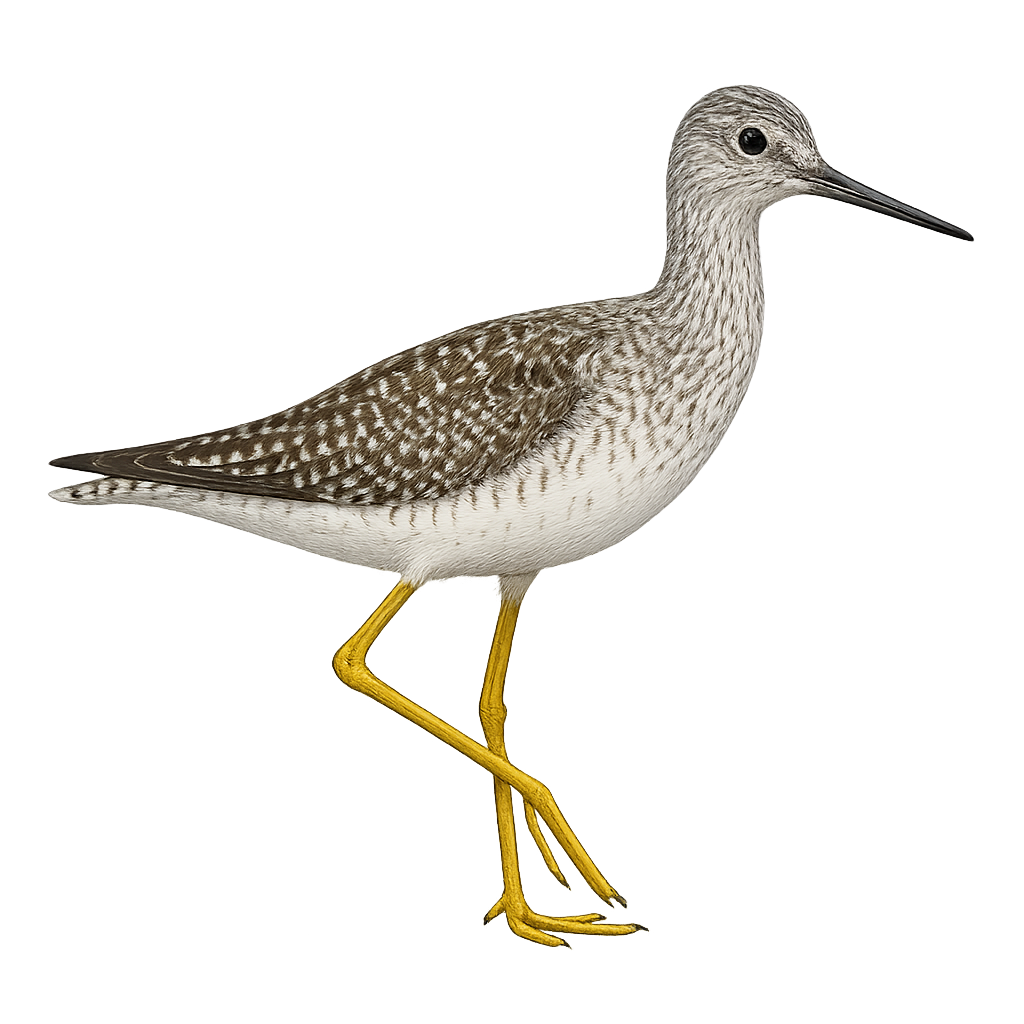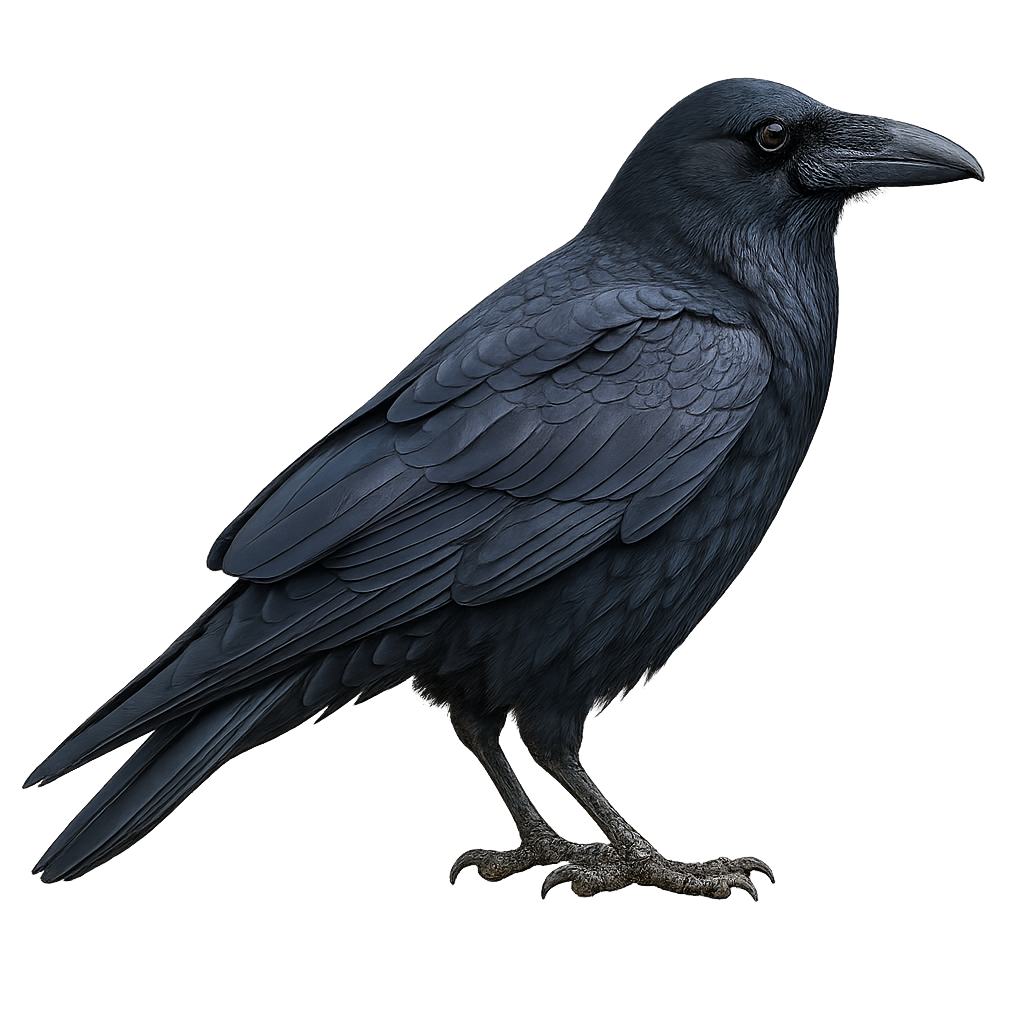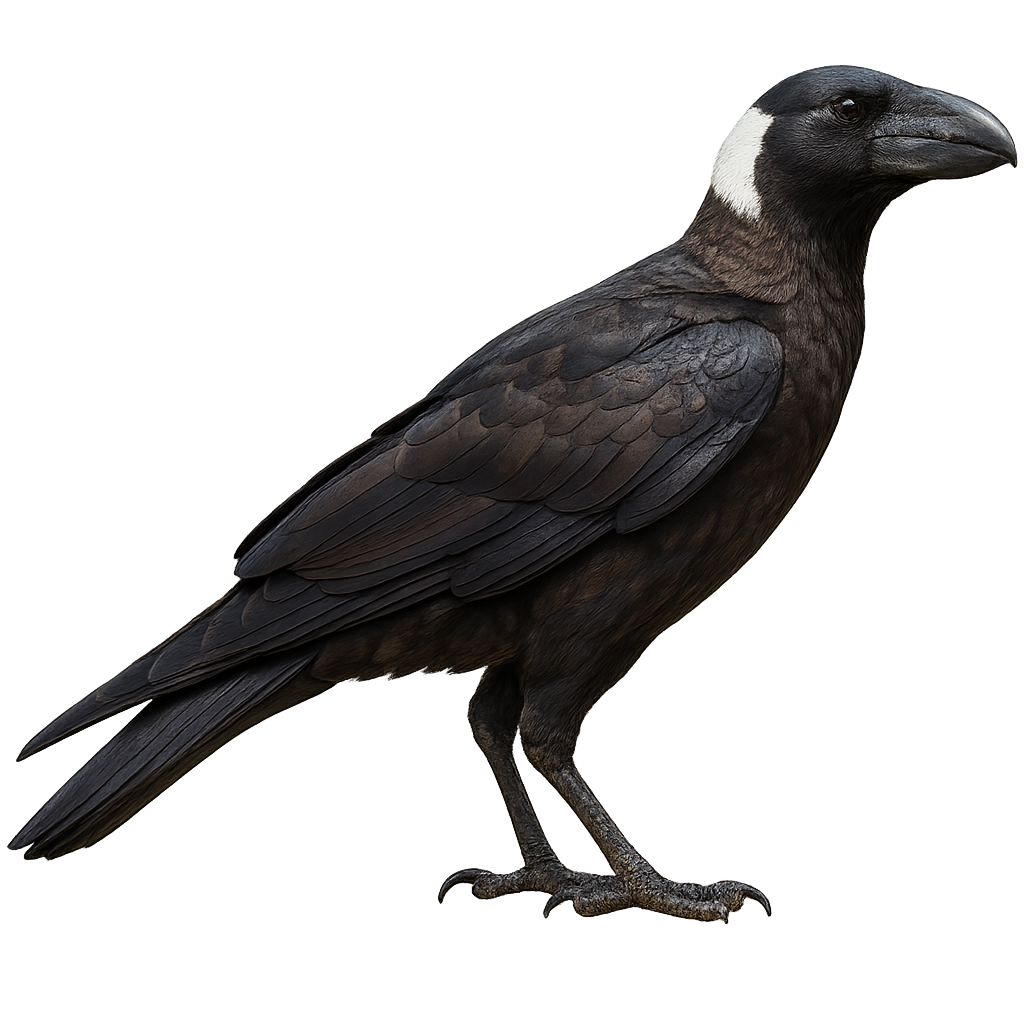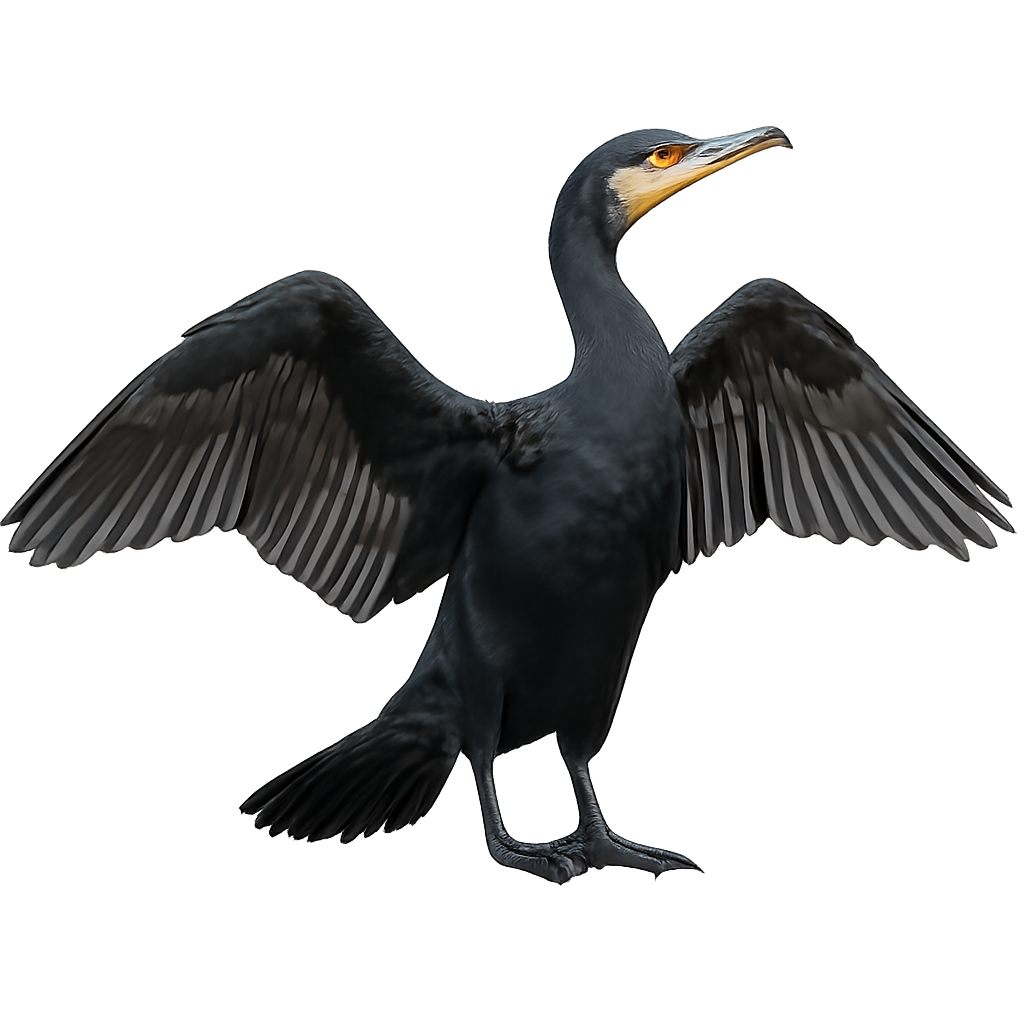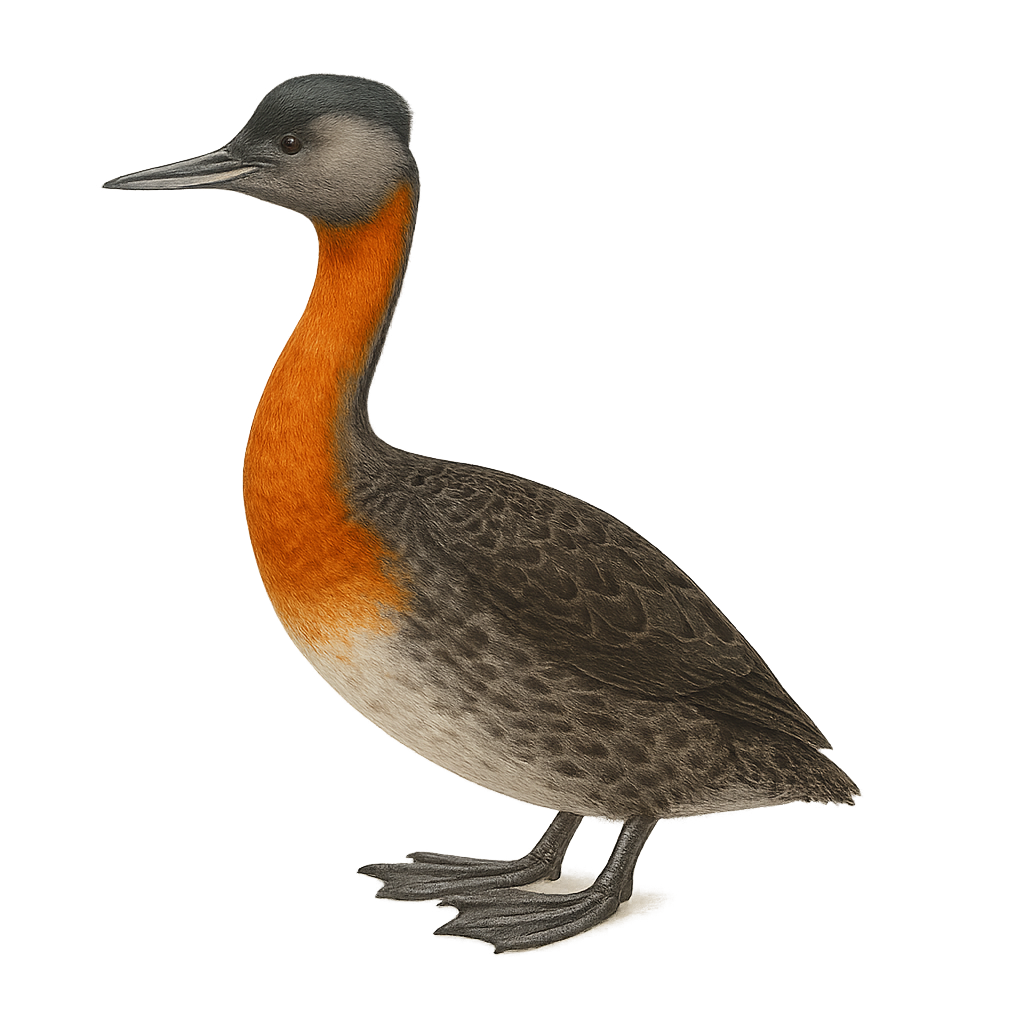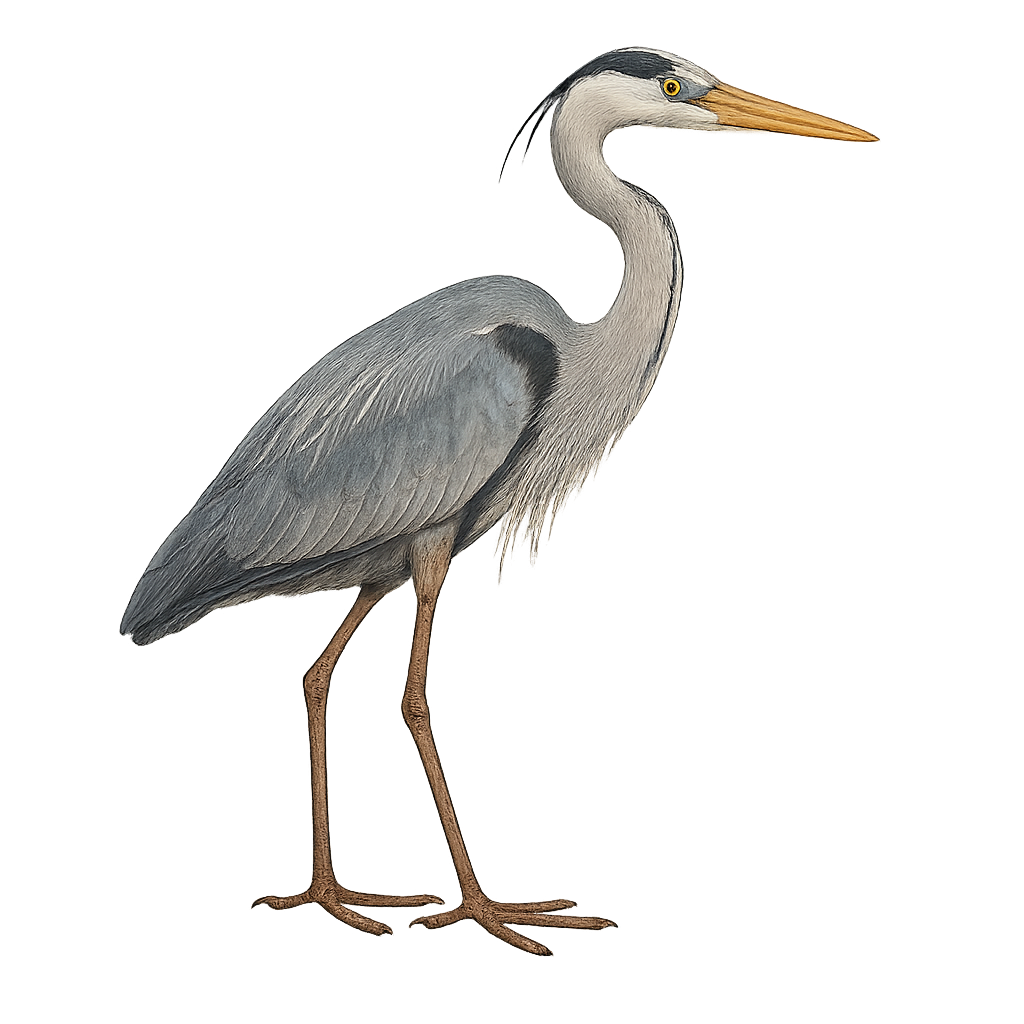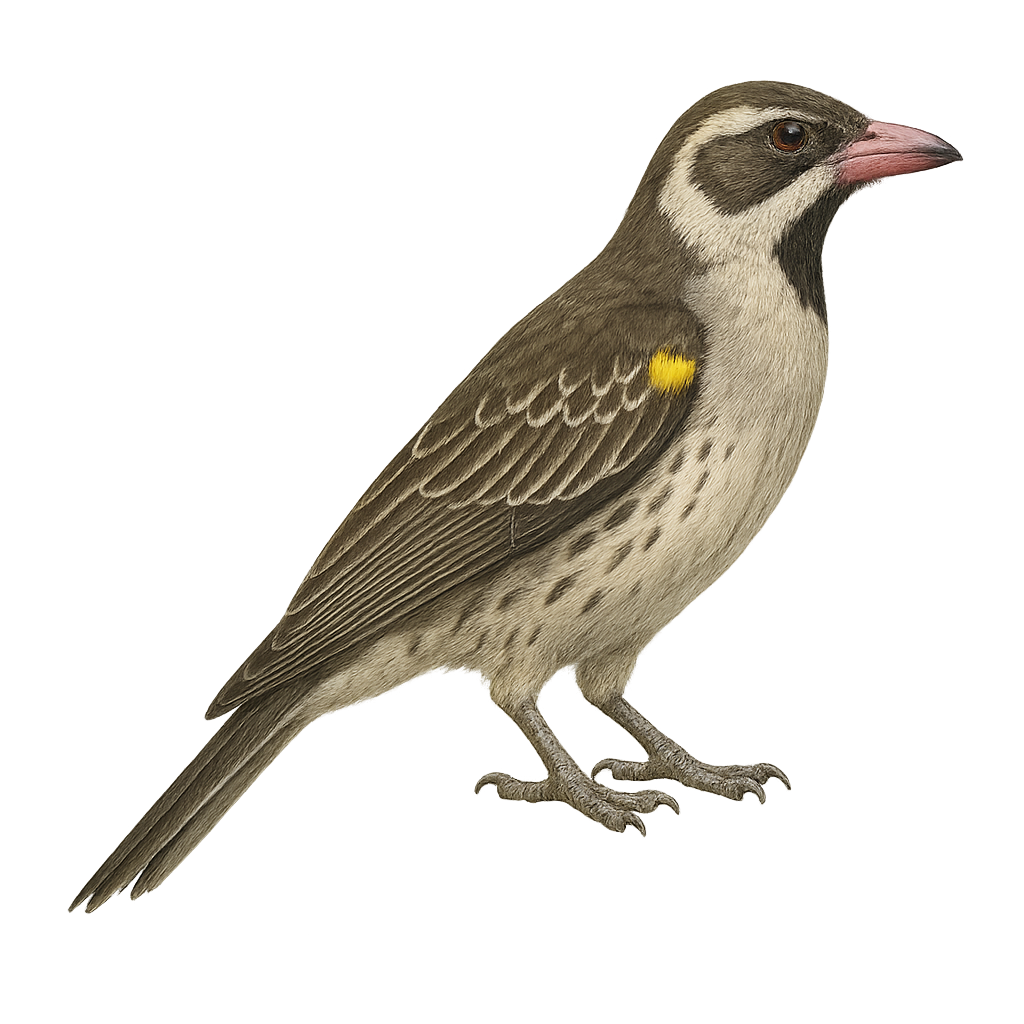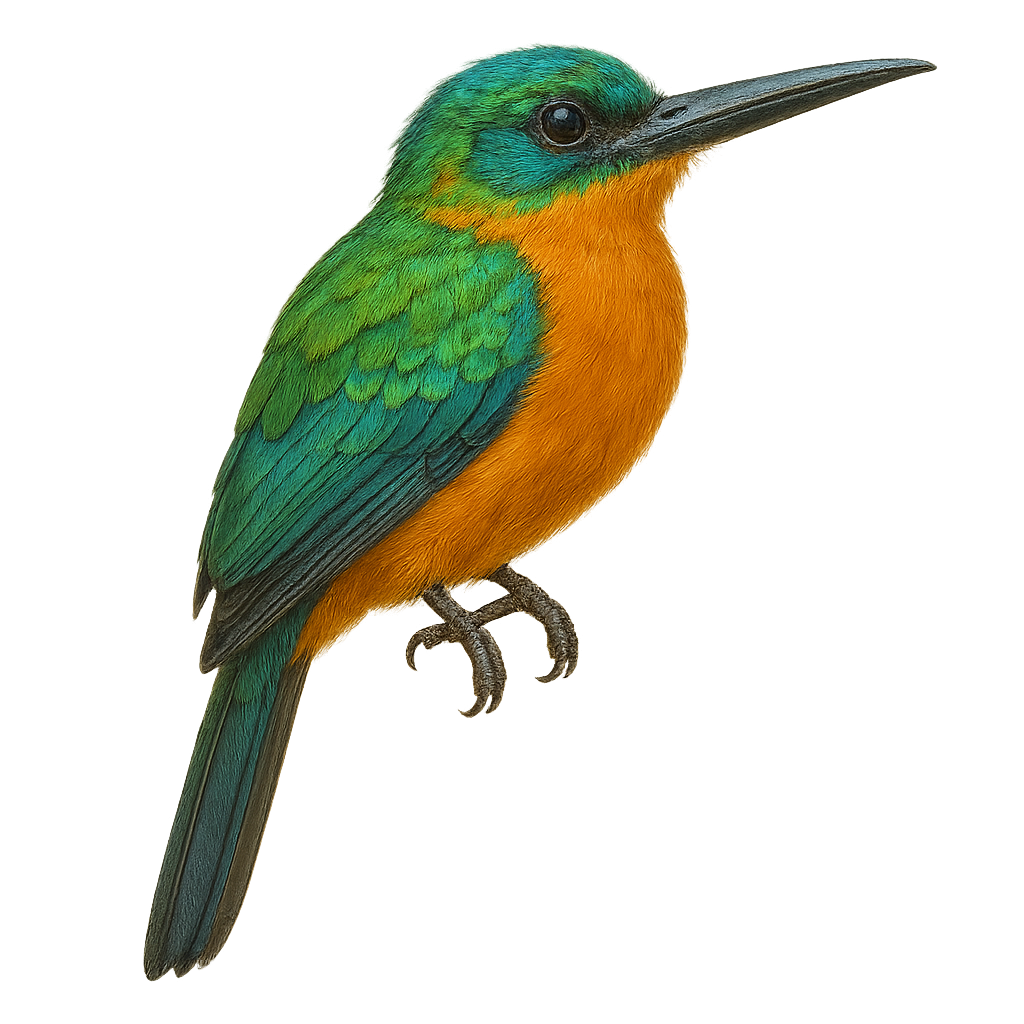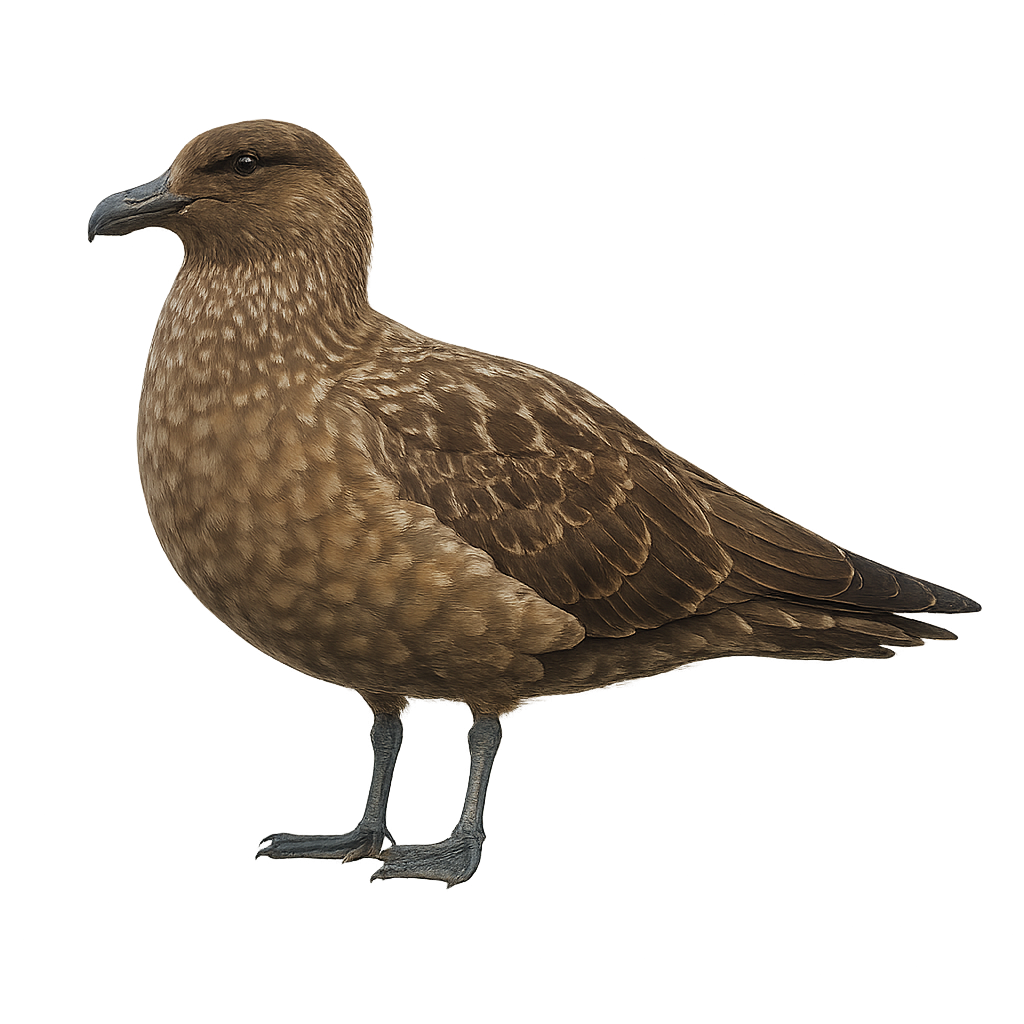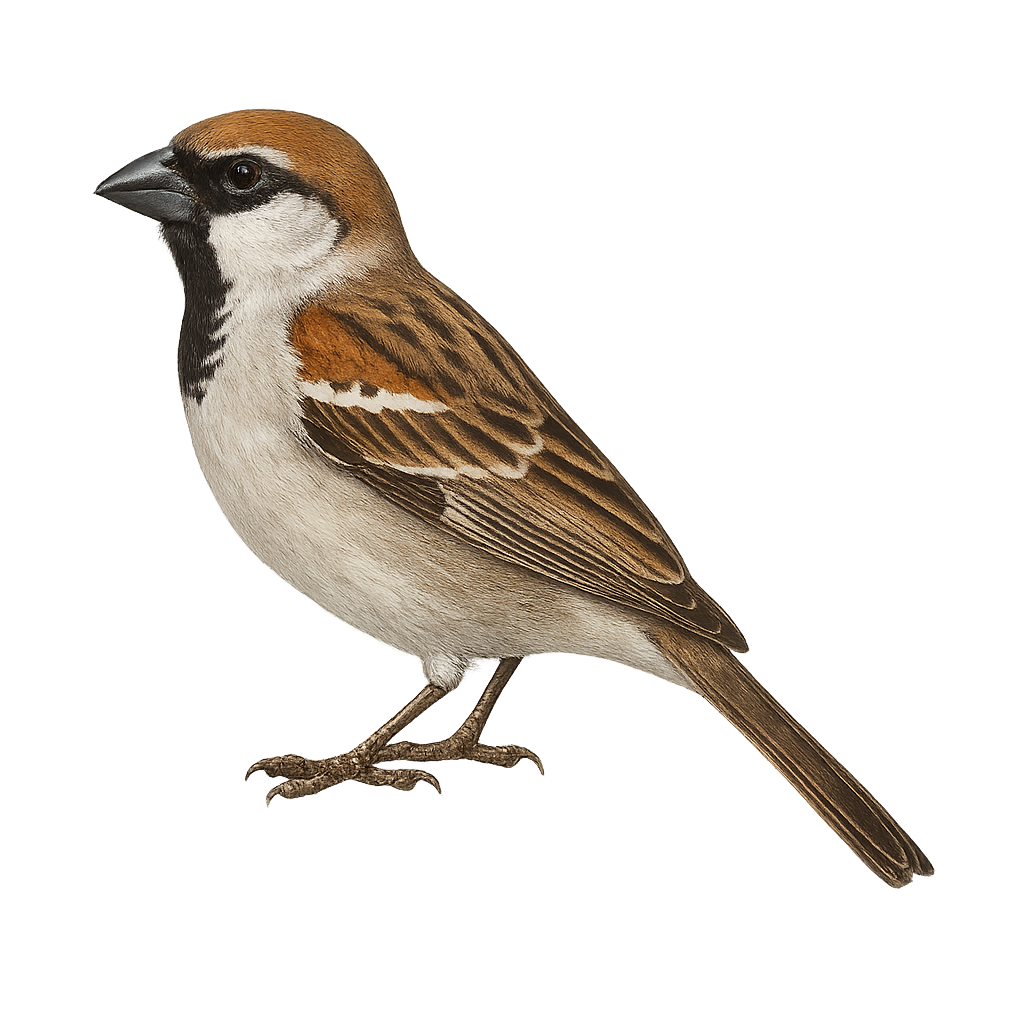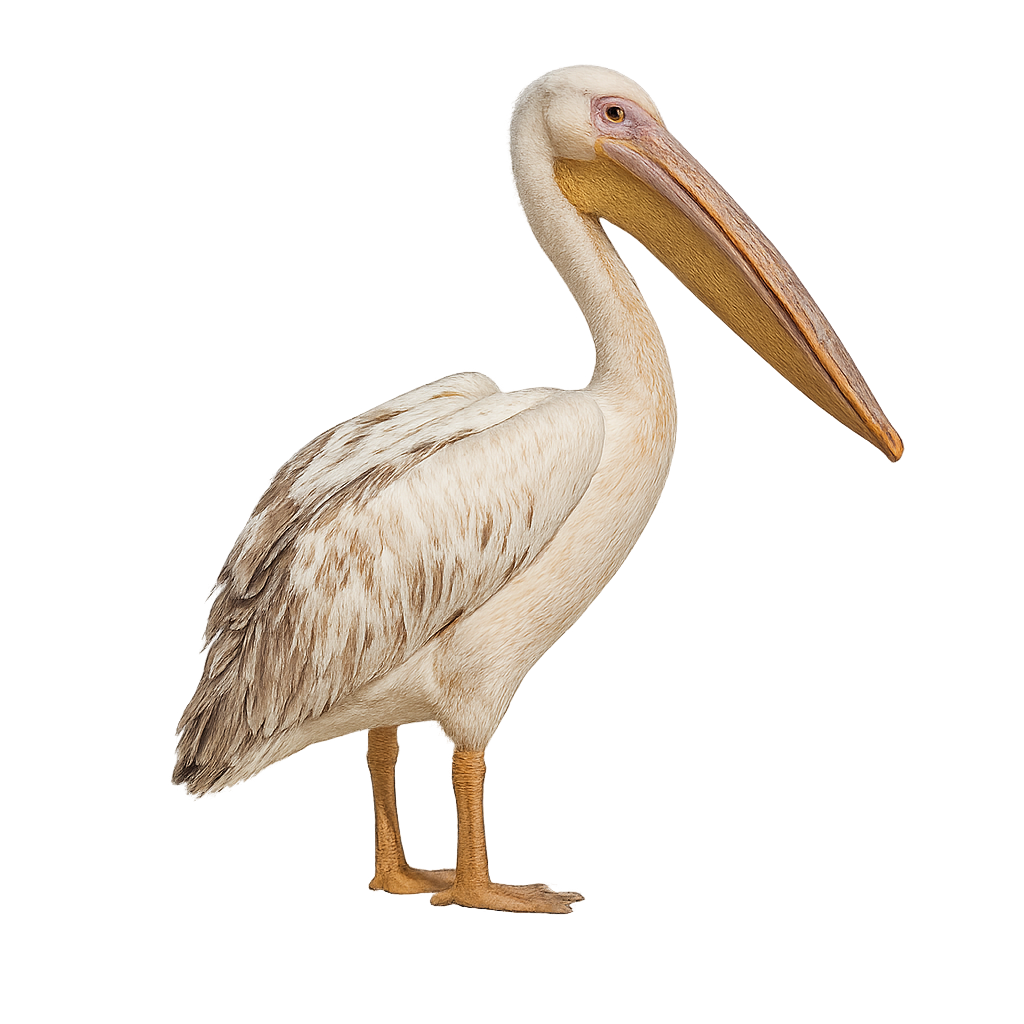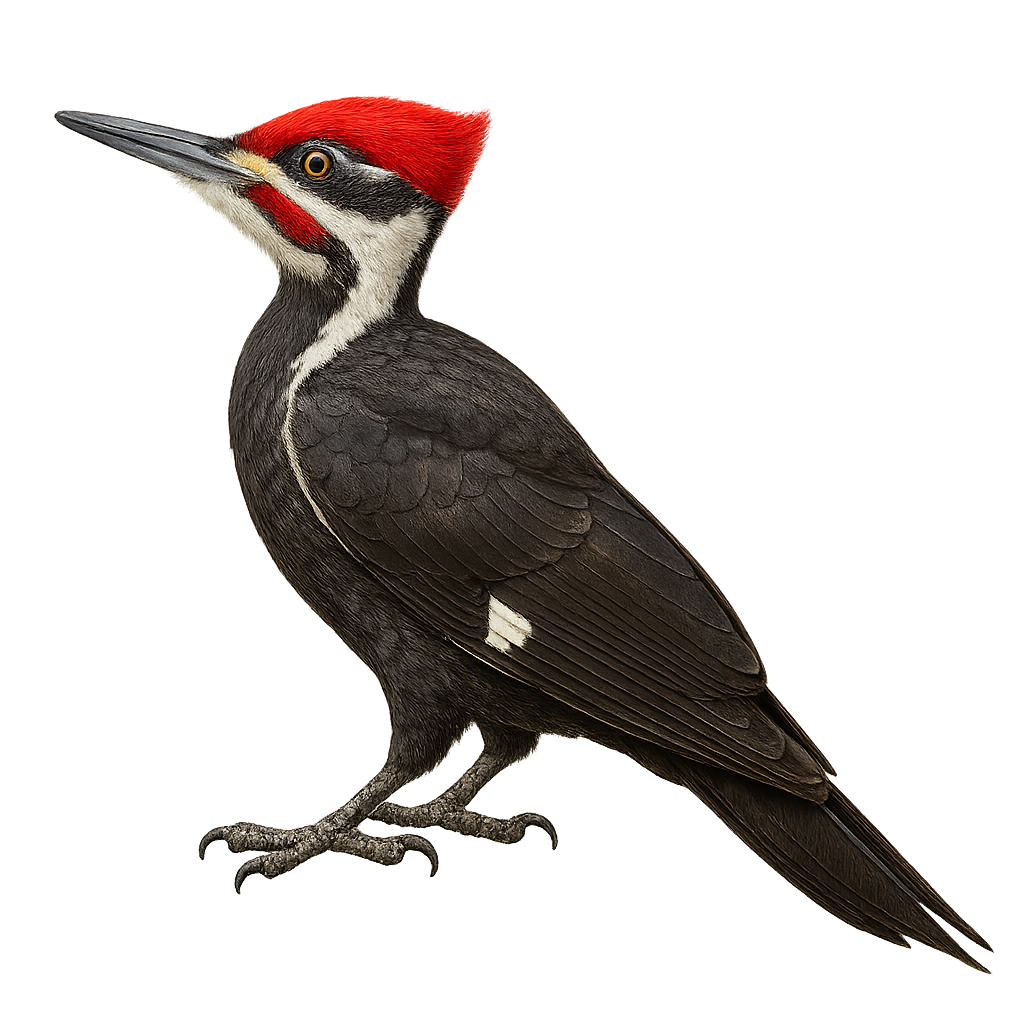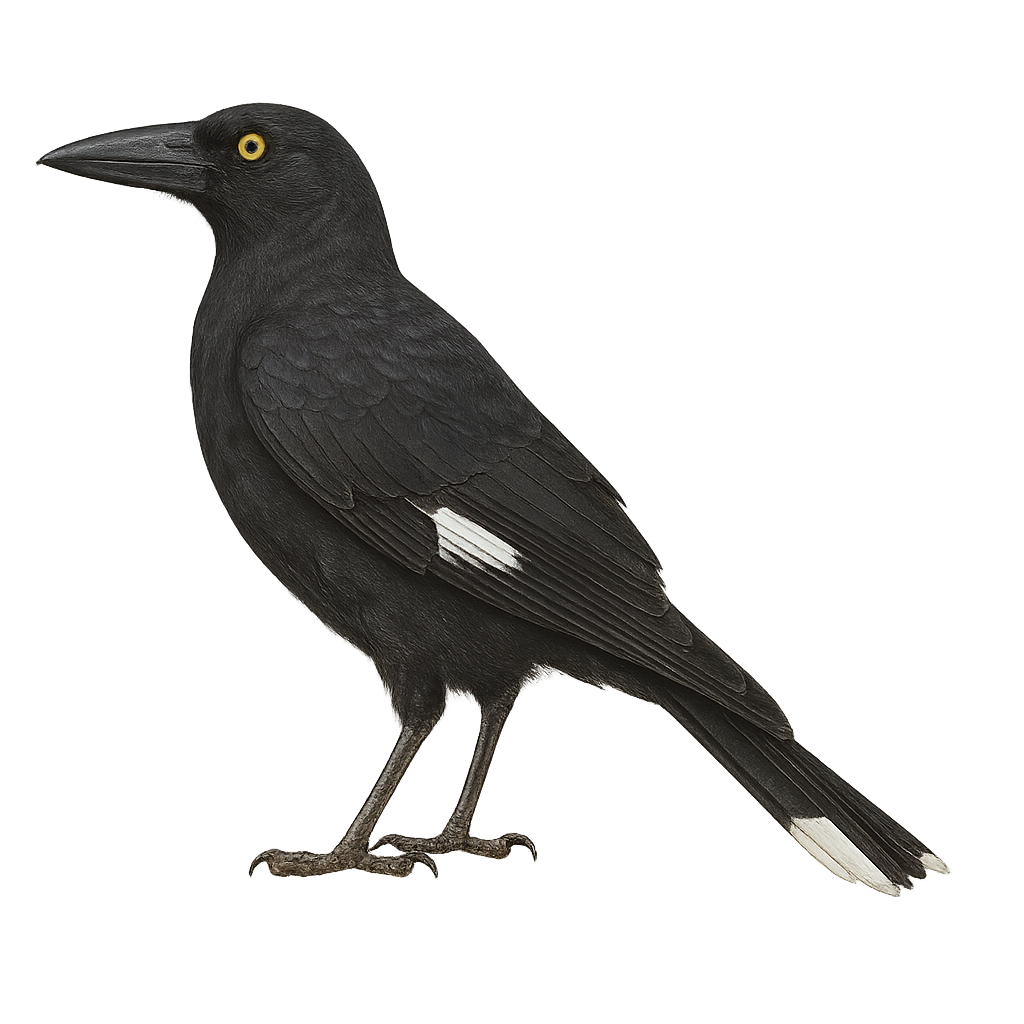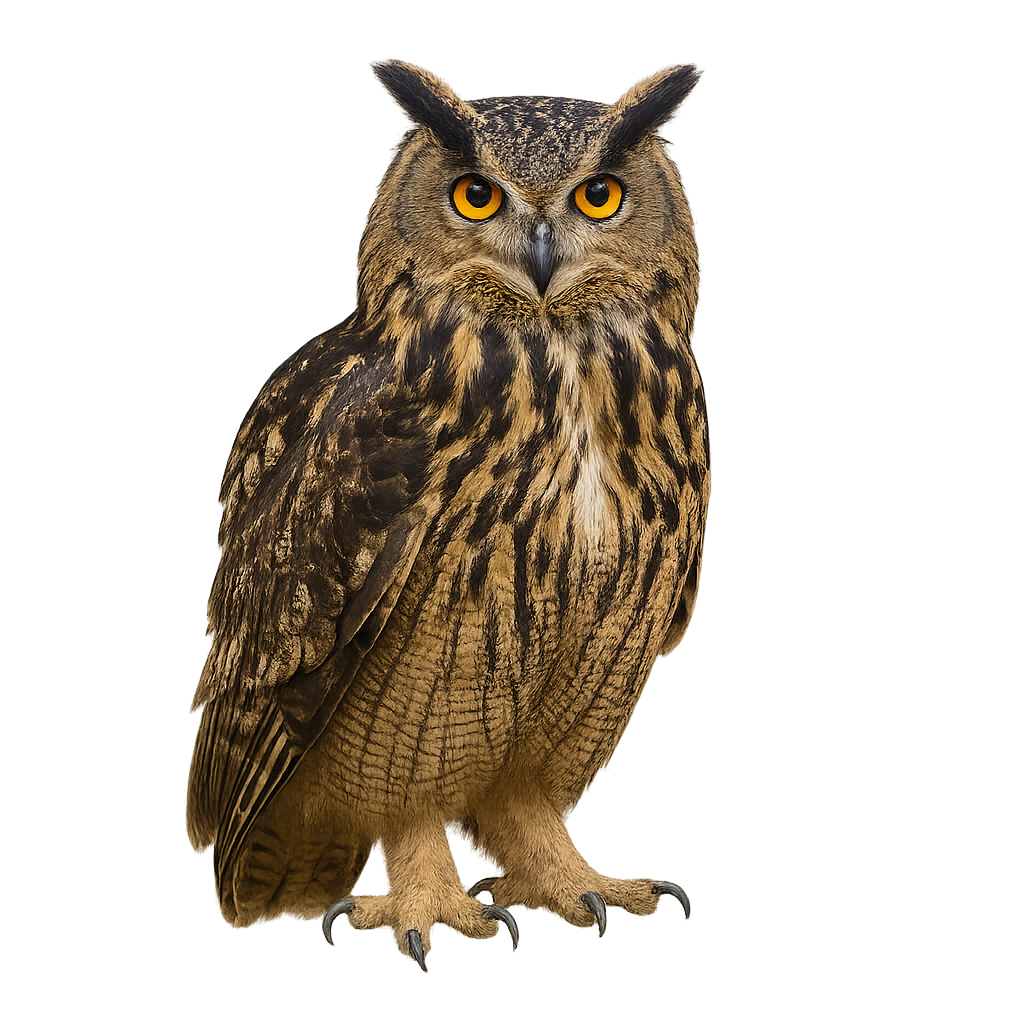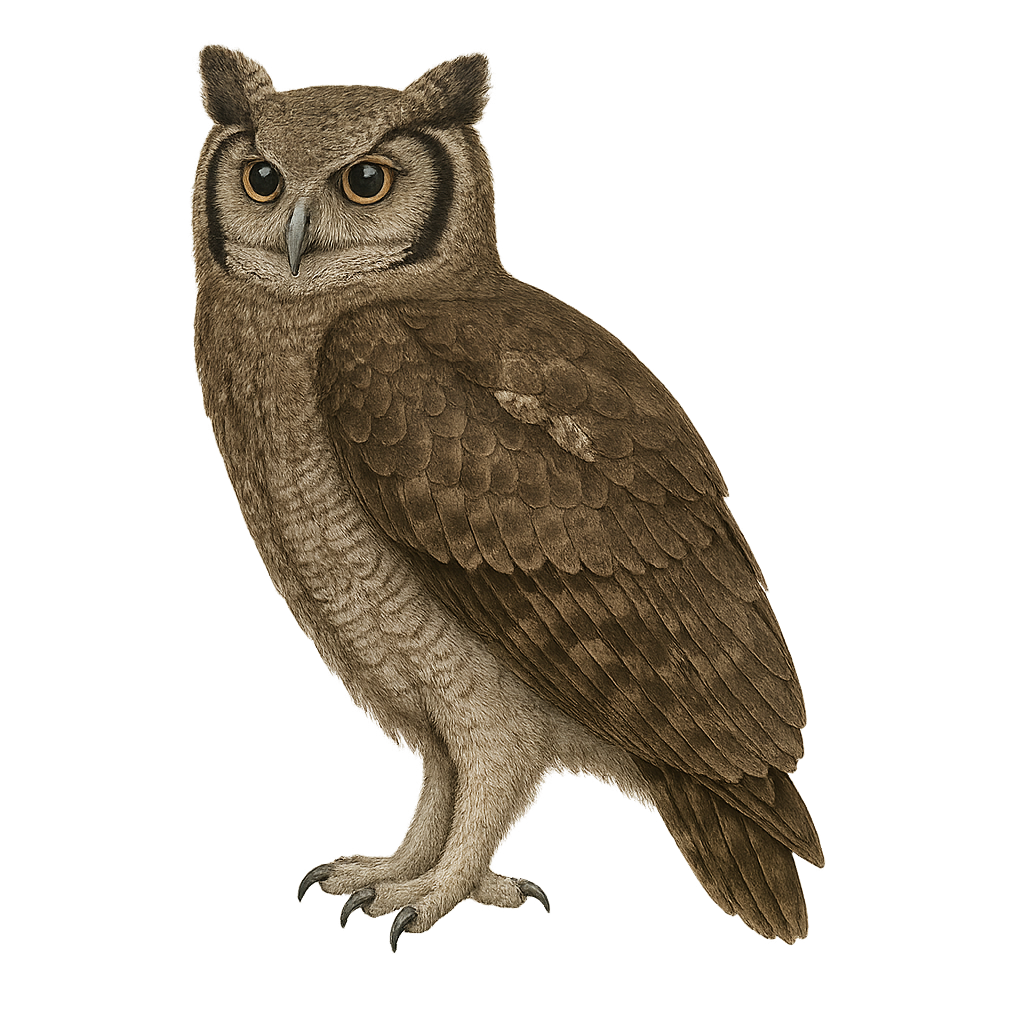The Laniarius barbarus, commonly known as the West African Boubou, is a bird with distinctive plumage, featuring a bright yellow breast contrasting with a black back. It is primarily found in West Africa, inhabiting savannas, open forests, and shrublands. This bird is known for its melodious song and harmonious duets with its partner. It primarily feeds on insects but can also consume fruits. The West African Boubou is a territorial bird, often seen alone or in pairs. Its ability to blend into its environment sometimes makes it difficult to spot, despite its vibrant colors.
The Macaroni Penguin, Eudyptes chrysolophus, is a medium-sized penguin known for its striking yellow crest contrasting with its black and white plumage. It primarily inhabits subantarctic and Antarctic islands, forming large colonies on rocky slopes. This penguin is an excellent swimmer, capable of diving to impressive depths to hunt fish, krill, and crustaceans. Its breeding season begins in the austral spring, where pairs reunite to nest. Although its conservation status is concerning due to climate change and industrial fishing, the Macaroni Penguin remains a fascinating species that continues to captivate researchers and nature enthusiasts.
Small penguin 45–60 cm long, 2–4.3 kg, with contrasting black-and-white plumage and distinctive yellow crest tufts on each side of the head. Occurs on subantarctic islands, feeds mainly on crustaceans, fish and krill, diving to 100 m, and breeds in large colonies on rocky shores.
The Bluethroat is a small songbird, easily recognizable by its bright blue throat, bordered by a black band, forming a distinctive "mirror" pattern. It measures about 13 to 14 cm in length, with a wingspan of 22 to 25 cm, and weighs around 15 to 20 g. Its plumage is generally brownish on the back and light on the belly, with white and orange markings on the sides of its chest. The Bluethroat is primarily found in marshy areas, shrublands, and riverbanks in Europe and Central Asia, although some populations migrate to North Africa during the winter. It is especially known for its melodious song, which is often heard during the breeding season. The species primarily feeds on insects, worms, and small berries. While the Bluethroat is not endangered, it faces risks related to the loss of its natural habitat and changes in wetland areas.
The Western Crowned Pigeon, or Goura cristata, is a majestic bird native to the forests of New Guinea. This large pigeon is easily recognizable by its delicate feathered crest and striking blue-grey plumage. It measures about 70 cm in length and can weigh up to 2.5 kg. Its elegant appearance and graceful gait make it a fascinating sight in its natural habitat. The Western Crowned Pigeon is a social bird that lives in small groups and primarily feeds on fruits, seeds, and insects. Although its flight is powerful, it prefers to walk on the ground in search of food. Unfortunately, this species is threatened by deforestation and hunting.
The Victoria crowned pigeon is a majestic bird, recognizable by its large size and spectacular crest of white and blue feathers. Native to New Guinea, it primarily inhabits tropical rainforests. Its plumage is a striking blue, with purplish hues on the chest and distinctive white markings on the wings. This ground-dwelling bird feeds mainly on fruits, seeds, and insects. Although generally calm, it can emit low sounds to communicate with its peers. The Victoria crowned pigeon is a monogamous species, and pairs share the responsibilities of nesting and raising the young.
The Twelve-wired Bird-of-paradise, or Seleucidis melanoleucus, is a remarkable bird known for its striking plumage and courtship displays. Males feature black and white feathers with distinctive golden wires on their tails, used to attract females. This bird inhabits the rainforests of New Guinea, feeding primarily on fruits and insects. Its song plays a crucial role in its social behavior, often heard at dawn. Although its habitat is threatened by deforestation, it remains relatively common in certain areas. Its ability to adapt to various forest environments gives it some resilience against environmental changes.
The Rufous Antpitta is a secretive bird found in the humid montane forests of South America, primarily in Ecuador and Peru. It is characterized by its reddish-brown plumage and compact size, measuring about 16 cm in length. This bird is more often heard than seen, as it prefers to stay hidden in dense undergrowth. It feeds mainly on insects and other small invertebrates found by foraging on the forest floor. The Rufous Antpitta is a solitary bird, except during the breeding season. It builds its nest on the ground, hidden among fallen leaves. Although its habitat is threatened by deforestation, it is currently classified as Least Concern by the IUCN.
The Yellow-breasted Antpitta is a discreet and fascinating bird belonging to the Grallariidae family. It is primarily found in the humid forests of the Andes, often hiding in dense vegetation. Its plumage is characterized by a tawny hue on the breast, contrasting with an olive-brown back. This bird is known for its melodious song, often heard before being seen. It primarily feeds on insects and other small invertebrates found by foraging on the forest floor. The Yellow-breasted Antpitta is a solitary bird, rarely seen in groups. Its shy nature and difficult-to-access habitat make it a challenge for birdwatchers.
The Rufous-headed Antpitta is a discreet and fascinating bird inhabiting the humid forests of the Andes. This small bird, about 18 cm long, is easily recognizable by its distinct rufous head, contrasting with its olive-brown body. It prefers dense undergrowth where it primarily feeds on insects and other small invertebrates. Although difficult to observe due to its shy behavior and dense habitat, its melodious song is often heard at dawn and dusk. Conservation efforts are crucial for this species as deforestation threatens its natural habitat.
The Great Green Macaw is a large, colorful, and majestic parrot known for its vibrant green plumage, with touches of blue, yellow, and red on the wings and face. It measures about 85 to 95 cm in length, with a wingspan of 1.2 to 1.4 meters, and weighs between 900 and 1,200 g. Its dominant green plumage is complemented by blue feathers on the wings and red around the face and chest. The Great Green Macaw primarily inhabits the tropical rainforests of Central and South America, notably in Colombia, Venezuela, Panama, Costa Rica, and Nicaragua. It feeds mainly on fruits, nuts, seeds, and flowers. This parrot is highly social and typically lives in family or small groups, but can also be seen in large flocks in its natural habitat. Although the Great Green Macaw is not yet immediately endangered, it faces threats such as habitat loss, illegal wildlife trade, and deforestation.
The Greater Yellowlegs, Tringa melanoleuca, is a medium-sized shorebird belonging to the Scolopacidae family. It is easily identifiable by its long yellow legs and straight, slender bill. Its plumage is primarily gray-brown with white spots, allowing it to blend effectively into its natural habitat. It is commonly found in wetlands, such as marshes, estuaries, and muddy shores. A migratory bird, it breeds in the northern regions of Canada and Alaska, then migrates south to spend the winter in Central and South America. Its call is a clear, melodious whistle, often heard during the breeding season.
The common raven is an impressive bird found in mountains, forests, and open areas across Europe, Asia, and North America. It is easily recognized by its large size, glossy black plumage, and hoarse call. This corvid is known for its exceptional intelligence and complex social behavior. It primarily feeds on carcasses, insects, and sometimes fruits and seeds.
The Thick-billed Raven, or Corvus crassirostris, is a raven species endemic to the highlands of Ethiopia and Eritrea. Recognizable by its massive, curved bill, it is the largest of the African ravens. Its plumage is predominantly black with metallic sheen, and it features a distinctive white patch on the nape. This raven is often seen in small groups, exploring mountainous landscapes in search of food. An opportunist, it feeds on a variety of items, from insects to small vertebrates, as well as fruits and seeds. Its intelligence and adaptability allow it to thrive in diverse environments, although it is primarily associated with rocky areas and cliffs.
The great cormorant is a large waterbird found across much of Europe, Asia, and North Africa. It is easily recognized by its glossy black plumage, long neck, and sharp, pointed beak. This cormorant primarily feeds on fish, which it catches by diving into the water, using its diving technique to capture prey underwater. The great cormorant is also an excellent swimmer and powerful flier.
The Large Niltava is a bird from the Muscicapidae family, known for its vibrant plumage and melodious songs. This bird is primarily found in the humid forests of the Himalayas and Southeast Asia. The male sports bright blue plumage with black accents, while the female has more subdued shades of brown and orange. The Large Niltava is a territorial bird that feeds mainly on insects and small fruits. It is often seen alone or in pairs, moving nimbly among dense branches. Although its habitat is threatened by deforestation, it remains relatively common in protected areas.
The Ringed Plover is a small coastal bird, easily recognizable by its compact size and distinctive plumage. It measures about 20 to 23 cm in length, with a wingspan of 40 to 45 cm, and weighs between 40 and 60 g. Its plumage is mainly beige and white, with black markings on its head and chest, and a distinctive black band around its eyes. The Ringed Plover is a migratory bird, primarily found on beaches, shorelines, and mudflats, where it feeds on small invertebrates, such as worms, crustaceans, and insects. It is often seen running quickly on the sand, searching for food, then stopping abruptly to catch it. The Ringed Plover lives in colonies during the breeding season, but generally prefers to remain alone or in small groups. Although it is not currently endangered, the Ringed Plover is vulnerable to human disturbances, such as the loss of its coastal habitat and the impact of pollution.
The Great Grebe, or Podiceps major, is a large aquatic bird primarily found in South America. It is characterized by its reddish-brown neck and chest, contrasting with a darker back. Its long, pointed bill is perfect for catching fish, its main food source. This bird prefers large freshwater bodies but can also be found in estuaries and coastal lagoons. It is an excellent diver, capable of staying underwater for several minutes to hunt. During the breeding season, the Great Grebe builds a floating nest from aquatic vegetation. Although its conservation status is currently "least concern," habitat degradation could pose long-term threats.
The Great Blue Heron, Ardea herodias, is a majestic bird native to North America's wetlands. With an impressive wingspan of up to 2 meters, it is easily recognized by its blue-gray plumage, white head with a black stripe, and long yellow bill. It inhabits marshes, rivers, and lakes, feeding mainly on fish, but also on small mammals and insects. Its flight is slow and powerful, with deep wing beats. The Great Blue Heron is a solitary bird, although it may gather in colonies for nesting. It builds its nest in trees or shrubs, often high up to avoid predators.
The Greater Honeyguide is a fascinating bird known for its symbiotic relationship with humans and some mammals. It guides them to wild bee hives, hoping they will open them to access the larvae and wax. This medium-sized bird, with brown and white plumage, is mainly found in sub-Saharan Africa. It has a sturdy beak and a relatively long tail. Its song is a mix of whistles and trills. Although often seen following humans, it remains wary and prefers to keep its distance. The Greater Honeyguide is a diurnal bird, active mainly in the morning and late afternoon.
The Great Jacamar, or Jacamerops aureus, is a captivating bird found in the tropical forests of South America. Averaging around 25 cm in length, its dazzling plumage with golden hues makes it a visual spectacle. It primarily feeds on insects, which it catches in flight with its long, slender bill. This bird is often seen perched on low branches, scanning its surroundings for prey. Although its song is subtle, it plays a crucial role in communication among individuals. The Great Jacamar is a solitary bird, but it can occasionally be seen in small family groups.
The Great Skua is a large, powerful seabird, belonging to the Stercorariidae family. It measures about 50 to 60 cm in length, with a wingspan of 120 to 130 cm, and weighs between 500 and 1,000 g. Its plumage is primarily brown and gray, with white markings on the wings and a generally dark head. The Great Skua is a migratory bird, found mainly in the coastal regions of the North Atlantic, particularly in Northern Europe, Iceland, Greenland, and parts of Canada. It is especially known for its piratical behavior, stealing food from other seabirds, such as gulls or fishing birds, by chasing them and forcing them to abandon their catch. While territorial, it is also an excellent swimmer and diver, feeding mainly on fish and crustaceans. The Great Skua is vulnerable to the loss of its coastal habitat and human disturbances, including pollution and disruptions caused by tourism.
The Cape Sparrow, or Passer motitensis, is a small, robust bird primarily found in southern Africa. It is characterized by its brown and grey plumage, with a black cap on males and a grey cap on females. These birds are often seen in groups, feeding on seeds, insects, and small fruits. They adapt well to urban and rural environments, nesting in cavities or artificial structures. Their song is a simple yet melodious chirp. Although their population is stable, they are sometimes threatened by habitat loss and competition with other sparrow species.
The Great White Pelican, or Pelecanus onocrotalus, is a large aquatic bird easily recognizable by its bright white plumage and long, voluminous bill with an expandable pouch. It primarily inhabits freshwater lakes and marshes, but can also be found in estuaries and coastal lagoons. This gregarious bird is often seen in large groups, flying in formation or resting on shores. It feeds mainly on fish, which it catches by dipping its bill into the water. Its collective fishing technique is fascinating, as several individuals form a circle to trap fish. The Great White Pelican is a symbol of cooperation and harmony in nature.
The Pileated Woodpecker is a striking bird, notable for its size and distinctive plumage. It is one of the largest woodpeckers in North America, measuring between 40 and 49 cm in length with a wingspan of up to 75 cm. Its plumage is predominantly black with a bright red crest on its head, more pronounced in males. The wings have white patches visible in flight. This forest bird is often found in coniferous and deciduous forests. Known for its powerful drumming on tree trunks, it uses this to communicate and mark its territory. It primarily feeds on ants and insect larvae, which it extracts from dead wood with its long bill.
The Pied Currawong, scientifically known as Strepera graculina, is a bird native to Australia, easily identified by its glossy black plumage and striking yellow eyes. It measures about 48 to 50 cm in length and has a strong, slightly hooked beak. This bird is often found in rainforests, open woodlands, and occasionally in urban parks. It is renowned for its melodious and varied song, which can include whistles, calls, and mimicry of other birds. As an opportunistic feeder, it primarily consumes fruits, insects, and small animals. The Pied Currawong is a social bird, often seen in small groups or pairs, especially during the breeding season.
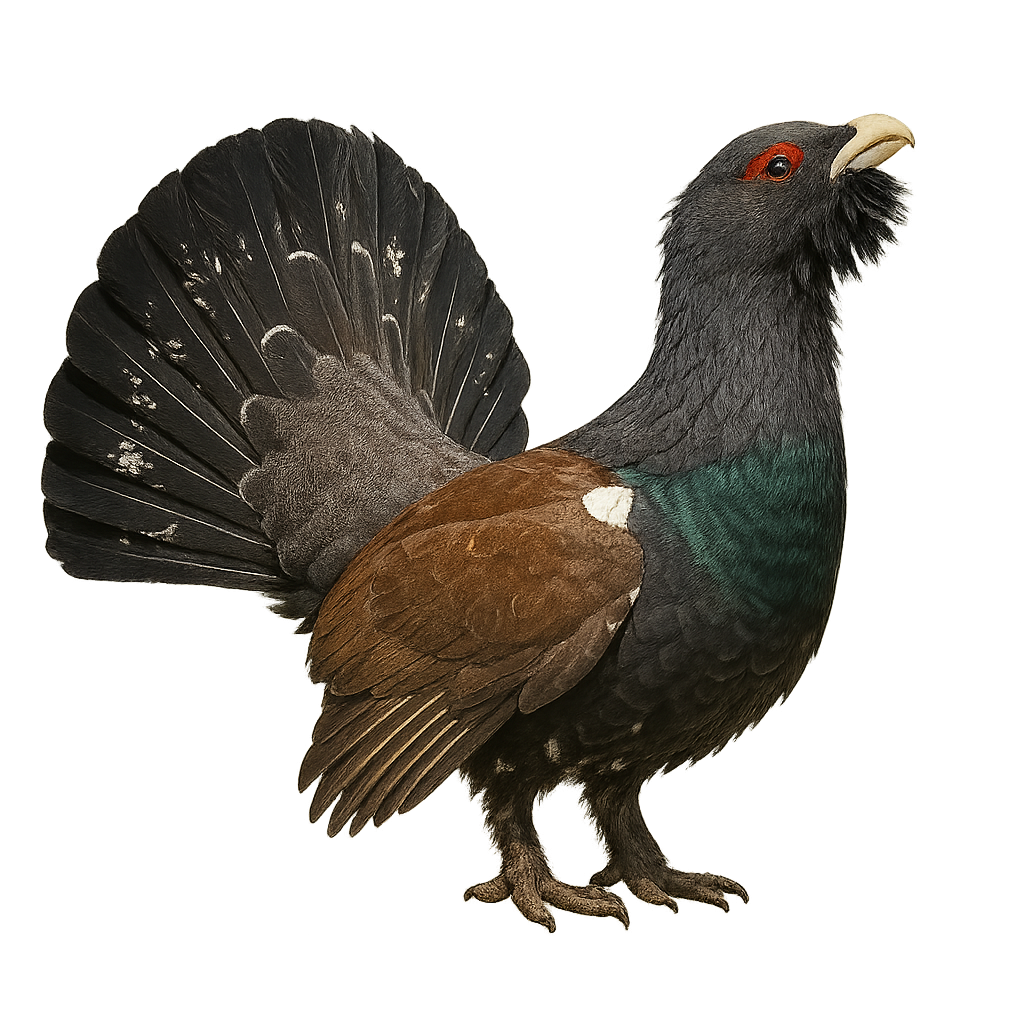
The Capercaillie is a large bird of the pheasant family, easily recognizable by its imposing size and distinctive plumage. It measures about 80 cm in length, with a wingspan of 1.2 meters and a weight ranging from 3 to 6 kg for males and 2 to 3 kg for females. The male's plumage is dark, with a reddish chest, a crest of feathers on the head, and a large V-shaped tail. The female, on the other hand, is more discreet, with a brown mottled plumage that allows her to better blend into the environment. The Capercaillie primarily inhabits coniferous and deciduous forests, particularly in the mountains and wooded areas of Europe, notably in France, Switzerland, Germany, and other mountainous regions. It feeds mainly on young shoots, seeds, fruits, and insects. This bird is also known for its spectacular mating displays, during which the male puffs up his chest, spreads his tail, and makes powerful calls to attract females. Although the species is not immediately endangered, the Capercaillie faces threats from deforestation, human disturbance, and habitat loss.
The Great Horned Owl is a large nocturnal raptor, one of the most imposing owls on the American continent. It measures between 50 and 70 cm in length, with a wingspan of 1.2 to 1.5 meters, and weighs between 1.5 and 2.5 kg. Its plumage is mainly brown, speckled with black, with lighter markings on its belly and wings. It has large tufts of feathers on its head that resemble ears, and piercing yellow eyes. This owl inhabits a variety of habitats, including forests, wooded areas, and open landscapes across North America, notably in the United States, Canada, and Central America. It is primarily nocturnal and carnivorous, feeding on small mammals, birds, and occasionally reptiles. It is also known for its impressive hunting abilities, flying silently to surprise its prey. Although the Great Horned Owl is not currently threatened, it may be affected by habitat loss and human disturbance.
The Eurasian Eagle-Owl is a large nocturnal raptor, one of the most imposing owls in the world. It measures between 60 and 70 cm in length, with a wingspan of 1.6 to 1.8 meters, and weighs between 1.5 and 4.5 kg. Its plumage is primarily brown, with white and black mottled patterns, and its eyes are bright orange, giving the bird a piercing gaze. It also has tufts of feathers on its head that resemble ears, which give it a distinctive appearance. The Eurasian Eagle-Owl primarily inhabits forests, mountains, and rocky areas in Europe, Western Asia, and the Middle East. It is an opportunistic hunter, feeding mainly on small mammals, birds, and sometimes reptiles or amphibians. The Eurasian Eagle-Owl is a solitary and territorial bird, known for its powerful and deep calls, often heard at night. While the species is not endangered, it may be affected by the destruction of its natural habitat and human disturbances.
The Verreaux's Eagle-Owl, or Bubo lacteus, is an impressive nocturnal raptor, recognizable by its dark eyes and prominent ear tufts. It is the largest owl in Africa, measuring up to 66 cm in length with a wingspan reaching 1.5 meters. Its plumage is primarily gray with lighter shades on the belly. This skilled predator feeds mainly on small mammals, birds, and sometimes reptiles. It is often found in savannas, open forests, and wooded areas near watercourses. Although its conservation status is currently "Least Concern," habitat destruction could threaten its populations in the future.


